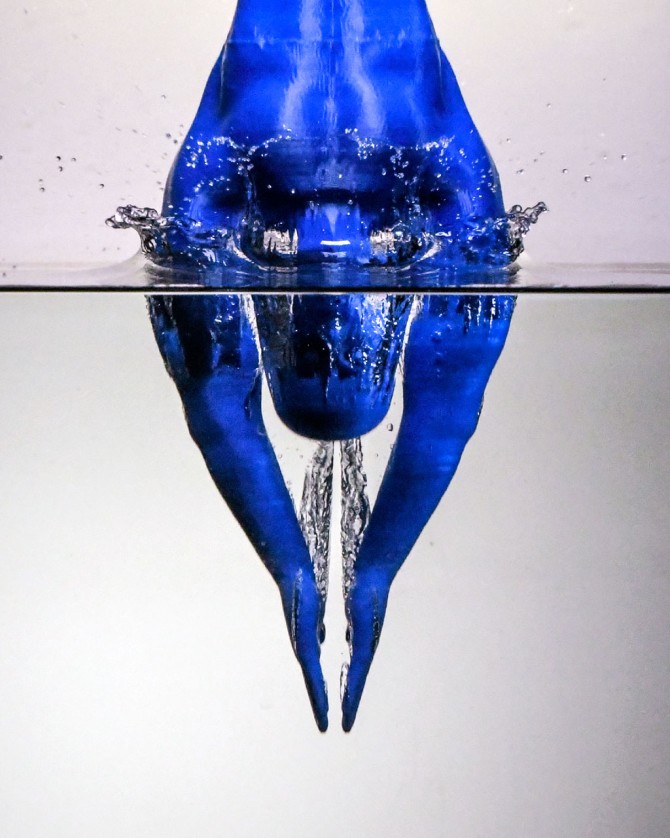Look before you leap: Study provides safety guidelines for diving
By Caitlin Hayes, Cornell Chronicle
New research in biomechanics measures the impact of head-first, hand-first and feet-first diving and the likelihood of injury at different diving heights, providing data-driven recommendations for safe diving and a model for measuring the impact of different shapes as they plunge into water.
For untrained divers, the researchers found that spinal cord and neck injury is likely above eight meters in a head-first dive; collarbone injury is likely above 12 meters in a hand-first dive; and knee injury is likely above 15 meters with feet-first diving.
The study, “Slamming Dynamics of Diving and its Implications for Diving-Related Injuries” published July 27 in Science Advances.
“Water is 1,000 times denser than air, so you are moving from a very dilute medium to a very dense medium, and you’re going to experience a huge impact,” said Sunghwan Jung, professor of biological and environmental engineering in the College of Agriculture and Life Sciences and senior author of the paper. “Humans can choose how they dive, so we wanted to look at the effect of the position of diving. We also wanted to come up with a more universal or general theory of how objects or different shape fronts dive into water, so we looked at the diving fronts of both humans in different postures and animals and measured the forces of impact of the different shapes.”
Anupam Pandey, a postdoctoral researcher in Jung’s lab, is the paper’s first author.
The researchers used 3D-printed models of a near-life-sized human head and torso, torso and head with arms outstretched, and feet, as well as models of a harbor porpoise head, a Northern gannet beak, and a basilisk lizard foot to examine the impact of curved, pointy, and flat shapes, respectively, on the water’s surface. They plunged the objects into water and measured the forces acting on them and how they were distributed over time and were able to develop a theoretical model describing the increase in force on the various shapes, and how those forces increased with the height of the dive.
They then plotted the height and impact with the force human muscles, ligaments and bones can withstand and found the probability of different injuries – to the collarbone, spine and knee – at different heights and at different diving positions.
“In human biomechanics, there is a huge literature on the falling injury, especially in the elderly, and the sports injury, like concussions, but I don’t know of any other work on diving injuries,” Jung said.
The research could help guide people to safer diving choices – a feet-first dive, for instance is safer from higher perches – and it also highlights how well-adapted plunge-diving animals are to mitigating the impacts of diving. Northern gannets, for instance, have shallower beak angles that allow them to dive into water at up to 24 meters per second. Dolphins have shortened, fused cervical vertebrae that support their head while they porpoise, the authors write.
Understanding how animals or objects cross interfaces is among the aims of Jung’s broader research program. His lab has studied the diving mechanics of animals and how animals jump out of water; a current project focuses on how a fox dives into snow.
“As engineers, we are very good at making the airplane fly in the air. We are good at making a submarine move in the water, but crossing the interface, as you see in the animal world, is no easy task, and is something engineers are interested in – having a drone go from water to air or air to water, for example,” Jung said. “So maybe this study can shed light on the new engineering design in the future that would allow systems to do this. For us, we try to understand the fundamental mechanics.”
This research was supported by the National Science Foundation.
Media Contact
Get Cornell news delivered right to your inbox.
Subscribe

